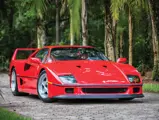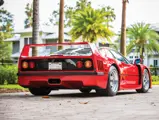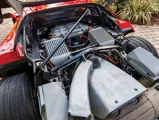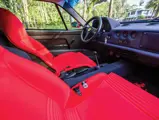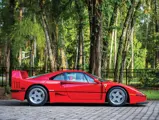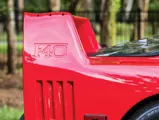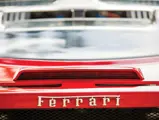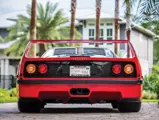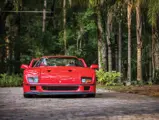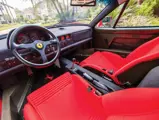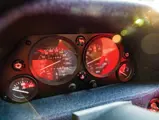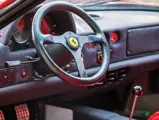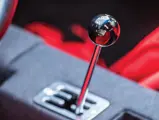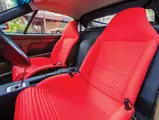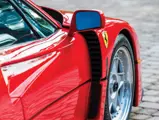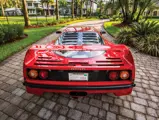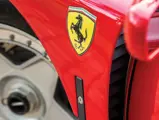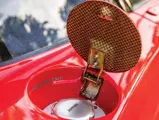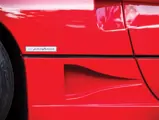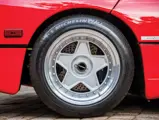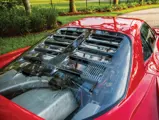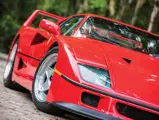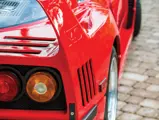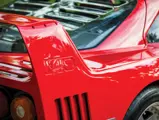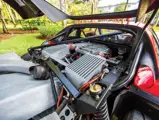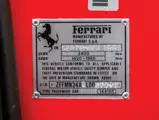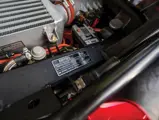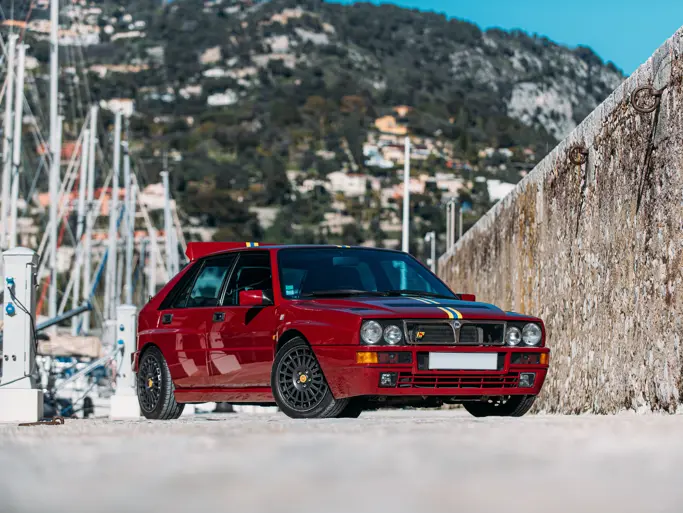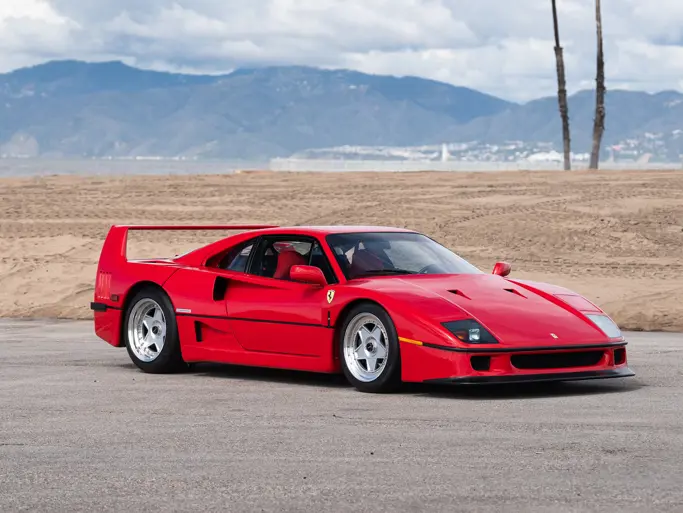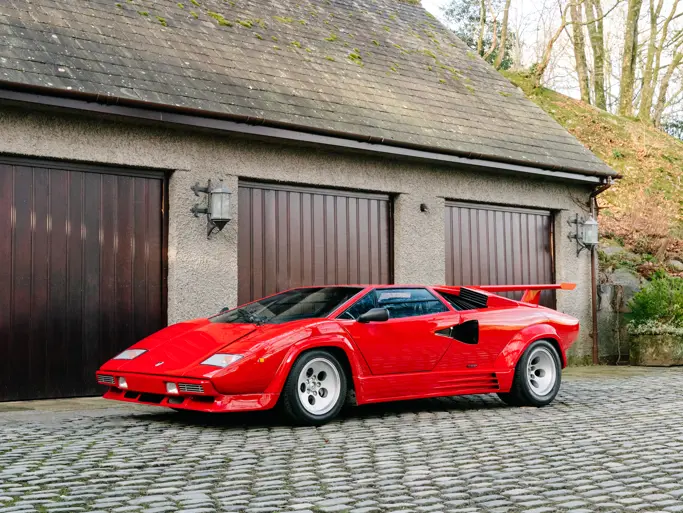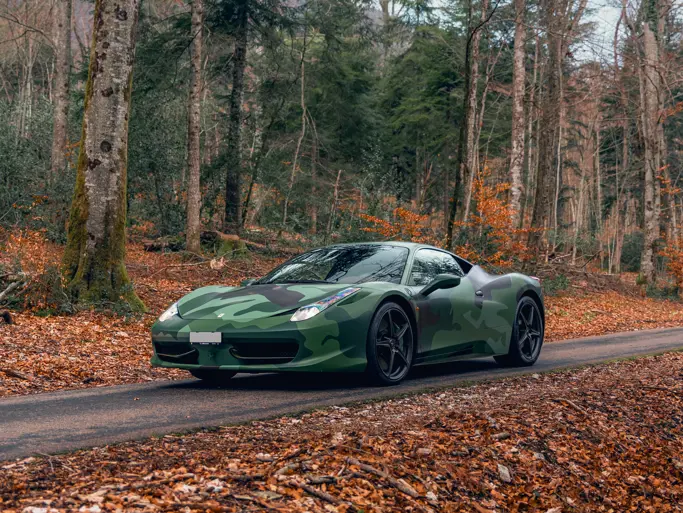Monterey 2018
1990 Ferrari F40
{{lr.item.text}}
$1,710,000 USD | Sold
 | Monterey, California
| Monterey, California
{{internetCurrentBid}}
{{internetTimeLeft}}

- Ferrari Classiche certified
- Retains is original engine and gearbox
- Only 1,700 original miles
- The 77th of 213 U.S.-specification examples
- Includes tool kit, books, accessories, and luggage
- A pristine example of any F40
In 1987, not only was Ferrari approaching its 40th anniversary, but it was also engaged in a supercar war with rivals Lamborghini and Porsche. Lamborghini’s Countach took the world by storm with its radical styling and incredible performance, making it the poster child of a generation. Adding fuel to the fire, Porsche introduced the 959 in 1986. The car was laden with many technological firsts for the automotive industry, and it was also capable of a blistering 197 mph, making it the world’s fastest road car. Of course, Ferrari would not let this stand; it needed something to silence the naysayers and put itself back atop of the record books.
Ferrari’s F40, developed from the 288 GTO Evoluzione, punched through an automotive barrier that had remained untouched, as it not only bested the 959’s top speed, but it also broke 200 mph in the process, achieving a top speed of 201.4 mph.
Unlike the 959, the F40 went about achieving 200 mph in a completely different fashion. Instead of using cutting-edge technology and loading the car with modern-day conveniences, Ferrari, as per usual, turned to its Formula 1 team for inspiration and stuck with the tried-and-true formula of “less is more” in order to make the F40 as lightweight as possible. In terms of the chassis, the track dimension of the 288 GTO’s frame was widened, and a fresh steel-tube frame was reinforced with an extensive use of carbon fiber, making the platform significantly lighter than its predecessor. When stripped out for racing, Ferrari was able to save a few further precious grams. The F40 had no carpet, featured door pulls instead of traditional handles, and could be ordered with roll-up or fixed windows (installing power-operated windows was simply out of the question). As a result of these fanatical weight-saving measures, the F40 tipped the scales at a feather-weight 2,400 lbs., paving the way for a powerful engine to rocket it into the annals of automotive history.
The engine was based on the 288 GTO’s twin-turbocharged V-8, but it was bored to displace nearly three liters. Following some additional tuning, the engine could produce 478 bhp, making it the most powerful road-going Ferrari to date. Combined with its lightweight nature, this made the F40’s performance figures just as incredible as its top speed. A sprint from 0–60 could take just 3.8 seconds, and the car could be powered onwards to a quarter-mile time in 11.8 seconds. Braking was equally impressive, and the F40 could bring itself to a stop from 60 mph in just 119 feet.
Production of the F40 was originally planned for just 400 units, and even with a list price of roughly $400,000, which was an astronomical price for a car at that time, many traded hands for much more than that when new. As a result of the car’s desirability, massive demand pushed total production numbers to 1,311, all of which would be in left-hand drive and liveried in classic Rossa Corsa paint. Of those examples, only 213 were delivered new to the U.S., making Ferrari’s ultimate road-going machine even rarer in its largest market.
Adding to its overall historical importance, the F40 was the last car to receive the blessing of Enzo “Il Commendatore” Ferrari before his passing. Enzo had envisioned the car as an ideal way for the company to celebrate its 40th anniversary, as it would both promote all it had accomplished in its short history as well as highlight its plans for making the next 40 years just as exciting as its last. As such, the F40 signaled the end of an era for one of the most iconic marques in automotive history.
This exceptional four-owner example has covered just over 1,700 miles since new. The F40 left the factory on 30 October 1990, assembly no. 03965, and is the 77th of the 213 U.S.-specification examples. In August 1991, the F40 was offered by Ferrari of Walnut Creek, where it was sold to Ronald Budworth of Surrey, British Columbia. The original owner kept the car for 19 years and drove it just 200 miles before selling the car to a friend, a Hawaii-based collector. He kept the car at his California home, servicing it and driving it another 500 miles with the intention of exercising the car. Then in August 2008, the car was sold for a world-record price, making it the most expensive F40 in the world at the time. Clearly an exceptional example, the F40 was then submitted to Ferrari Classiche in 2011, where it was certified without issue. As such, the car was confirmed to retain its original major mechanical components, including engine and transmission. Around this time the car also received a major service at Ferrari of Tampa Bay, invoices for which are included on file. Come March 2017, the car was acquired by the current owner having been driven a mere 1,500 original miles.
Today, the car remains in remarkable original condition. The paintwork is virtually flawless – the same paint laid down in Maranello almost 30 years ago. The engine bay, chassis, and interior are similarly as new, with little or no evidence of age.
With just under 1,700 miles from new, this wonderful example of one of Ferrari’s best-loved supercars may well be the closest possible experience to walking into a Ferrari dealership and taking delivery of a brand-new F40. As quality-example F40s are becoming more and more difficult to find, the offering of this particular car presents a great opportunity for any collector. Presented with its original books in leather folio, parts and workshop manuals, factory tool kit, tire inflator, car cover, and luggage set, this F40 epitomizes a one-of-kind analog experience along with pristine quality.

